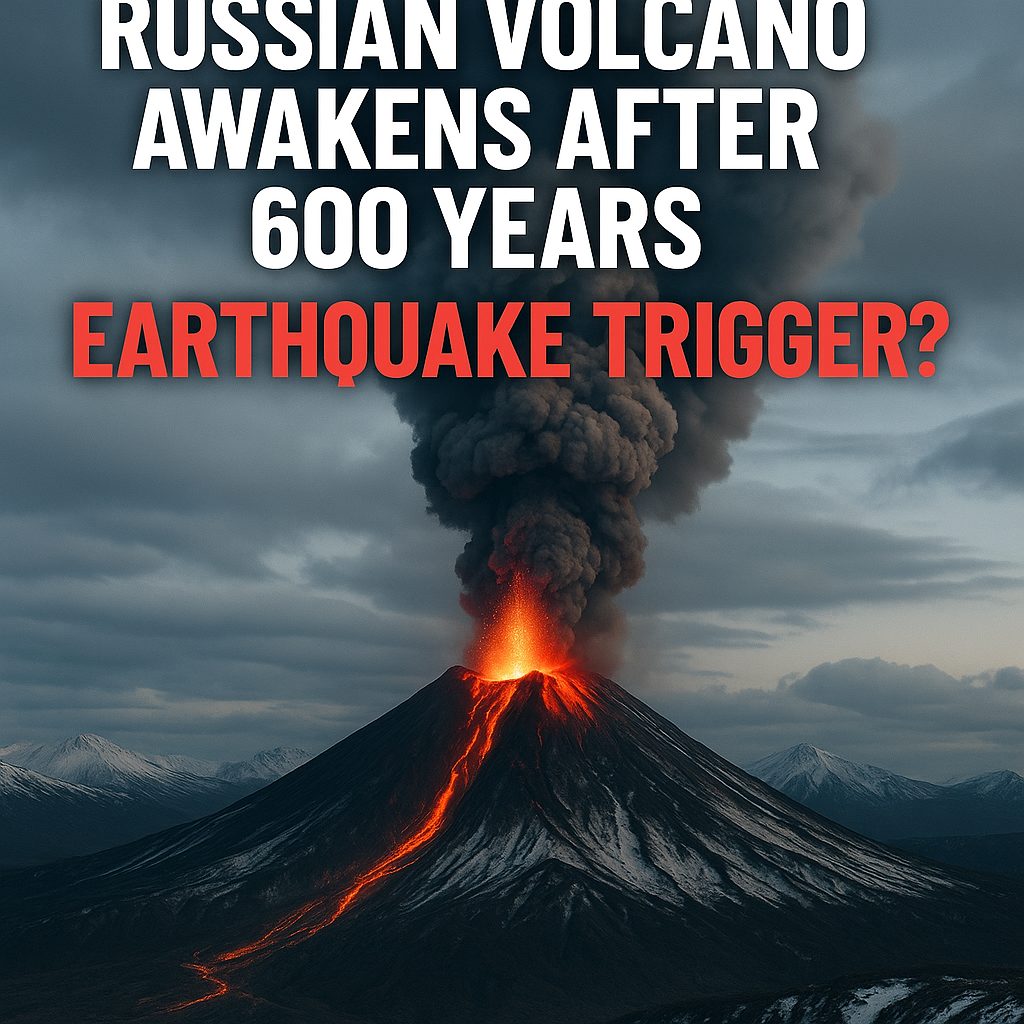Physical Address
304 North Cardinal St.
Dorchester Center, MA 02124
Physical Address
304 North Cardinal St.
Dorchester Center, MA 02124


A major geological event is making headlines worldwide. The Krasheninnikov volcano on Russia’s Kamchatka Peninsula erupted for the first time in over six centuries, astonishing volcanologists and sparking questions about the link between seismic and volcanic activity. The eruption, which followed a powerful 8.8 magnitude earthquake, is under close scientific scrutiny for potential cause-and-effect relationships.
The Kamchatka Peninsula, located in Russia’s far east, is part of the Pacific Ring of Fire—one of the world’s most seismically active regions. It hosts over 160 volcanoes, with 29 considered active. But what sets this eruption apart is the volcano involved: Krasheninnikov, a long-dormant stratovolcano last active around 1463 AD.
The Krasheninnikov volcano had not erupted in recorded history. Its awakening after approximately 600 years has scientists intrigued and somewhat alarmed. According to Russia’s Institute of Volcanology, this marks the first observed eruption since the 15th century.
The eruption featured:
Just days before the eruption, a massive 8.8 magnitude earthquake rattled the same region. This has led experts to consider a possible link.
However, the volcano had reportedly shown minor pre-eruption thermal anomalies, indicating that internal magma movement may have already been underway.
The Kamchatka region experienced multiple eruptions in the same timeframe:
This suggests the region is experiencing a broader volcanic phase, possibly influenced by tectonic shifts caused by the quake.
The eruption isn’t just a stunning natural event; it offers rare insights into:
Additionally, Krasheninnikov had minimal monitoring due to its long dormancy, raising concerns about other “quiet” volcanoes in seismically active zones.
| Parameter | Details |
|---|---|
| Volcano | Krasheninnikov, Kamchatka, Russia |
| Last Known Eruption | ~1463 AD (600+ years ago) |
| Current Eruption Date | August 2, 2025 |
| Ash Column Height | ≈6,000 meters (~20,000 ft) |
| Trigger Suspected | 8.8 magnitude earthquake on July 30, 2025 |
| Aviation Alert Level | Orange |
| Nearby Volcanoes Active | Klyuchevskoy, Bezymianny, Shiveluch |
| Region | Pacific Ring of Fire |
Authorities have assured that no immediate danger threatens nearby human settlements due to the region’s sparse population.
Q1. When did Krasheninnikov last erupt?
👉 Around 1463 AD, with no significant activity for over 600 years.
Q2. Did the recent earthquake cause the eruption?
👉 Possibly. Scientists suggest the earthquake may have altered underground stress levels, but it wasn’t the sole cause.
Q3. Is air travel affected?
👉 Yes, an orange aviation warning has been issued. Flights are being rerouted.
Q4. Is this a sign of more eruptions?
👉 Kamchatka is highly volcanic. While this is unusual, other eruptions are being monitored.
Q5. Could other dormant volcanoes awaken?
👉 It’s possible, especially in tectonically active regions like Kamchatka.
Q6. How is this being monitored?
👉 Through satellite imaging, thermal sensors, and seismic stations—though Krasheninnikov had limited coverage until now.
The sudden eruption of a 600-year dormant Russian volcano, possibly triggered by an 8.8 magnitude earthquake, is a rare and powerful reminder of Earth’s dynamic inner workings. As the Kamchatka region continues to rumble, volcanologists and geologists are watching closely—hoping to better understand what connects Earth’s tectonic stress to long-sleeping volcanic giants.